by Jean Léorat, DVM,Global Veterinary Services Manager and Marco-Aurelio Elmer Lopes, DVM, Global Poultry Marketing, Ceva, France.
Avian infectious bronchitis virus is a coronavirus that contains a single-stranded positive-sense RNA genome. This genome is encased in a lipid envelope with glycoprotein spikes on the surface of the virus particle.
Other structural proteins that make up the virus are the integral membrane glycoprotein, the envelope glycoprotein, and the internal nucleocapsid protein that surrounds and protects the viral RNA genome.
The spike glycoproteins are different for different types of the virus to organize the coronavirus classification.
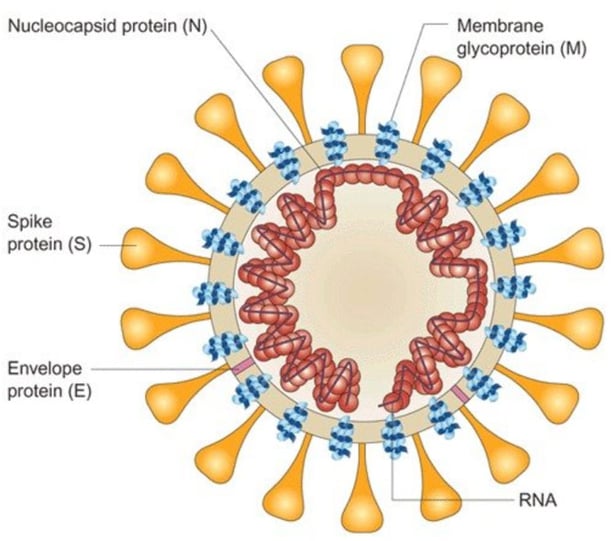
ADDED VALUE OF CORONOVIRUS CLASSIFICATION
The first step is coronavirus strain identification. So, as shown in Fig. 1, we can identify some major groups (with different colors). The objectives are:
- To help the Veterinary Technical Support team with the diagnosis when the symptoms (respiratory symptoms and lesions, diarrhea (with kidney lesions), or false layer development could suggest coronavirus infection.
- To have information about cross-protection between this strain group (or sometimes the individual strain) and the vaccine strains of the vaccination program.
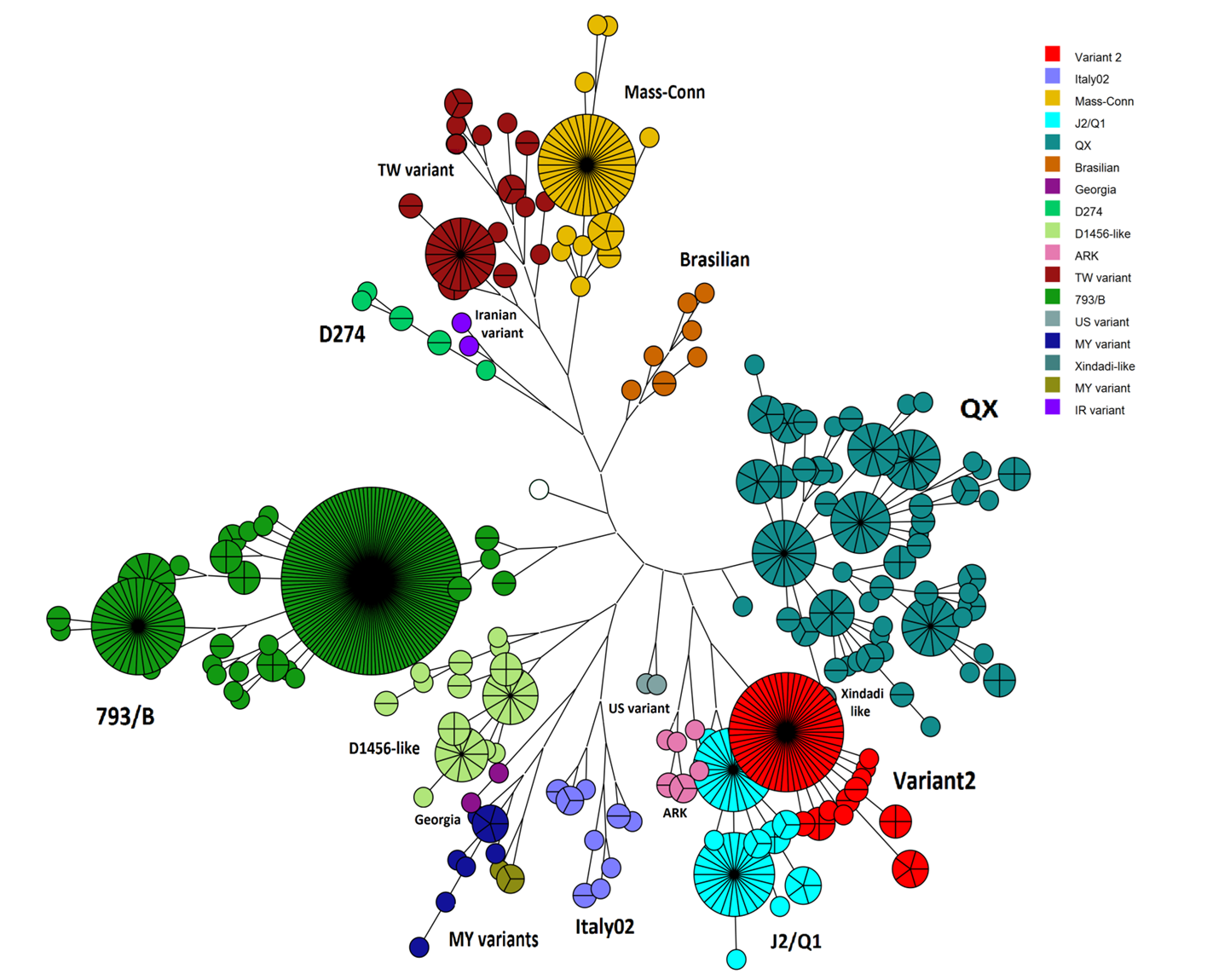
MAJOR SYMPTOMS AND LESIONS IN PRODUCTION
Coronavirus tropism can be present in different organs: the trachea, the kidney, and the reproductive system. The symptoms appear quickly after infection (24-48 hours only) and could be short (respiratory symptoms, diarrhea), medium (egg drop), or long-term (false layer).
The amplitude and the length also depend on the quality of immunization with the vaccination program.
Bear in mind that:
- Everything could be infectious bronchitis and coronavirus infection when the Veterinary Technical Support team is carrying out a broiler farm visit, slaughterhouse condemnation, and lesions checking.
- When the Veterinary Technical Support team suspects coronavirus disease, it could be mutual with other pathogens, such as H9, AmPv, bacteria, fungus, or a technical issue (ambiance parameter for respiratory symptoms or other specific intestinal etiology for digestive symptoms).
CROSS-PROTECTION DEMONSTRATION AND CILIOSTASIS SCORE
Scientific teams around the world are using the ciliostasis method and scoring to demonstrate and quantify the quality of immunization and protection against coronavirus strain on the trachea epithelium.
Only respiratory protection can be evaluated and quantified. The protection was evaluated five days post-challenge based on prevention of ciliostasis (evaluation according to the European Pharmacopoeia) and reduction of challenge virus replication in the trachea (measured by RT-Real Time PCR).
The ciliostasis give two major pieces of information:
- Duration of protection.
- Protection evaluation.
The ciliostasis technique is standardized; the ciliostasis scoring shows the movement of trachea epithelium cilia; the cilia mobility shows the trachea epithelium integrity with a high ciliostasis score and a high protection level.
To add Real-Time Rt-PCR process to evaluate reduction of mean virus load in the trachea.
The concept of cross-protection by combining a Massachusetts and a 793B serotype vaccine was discovered in the 1990s by Jane Cook in the UK. The ciliostasis technique could be used to evaluate protection duration (Tables 1 and 2).
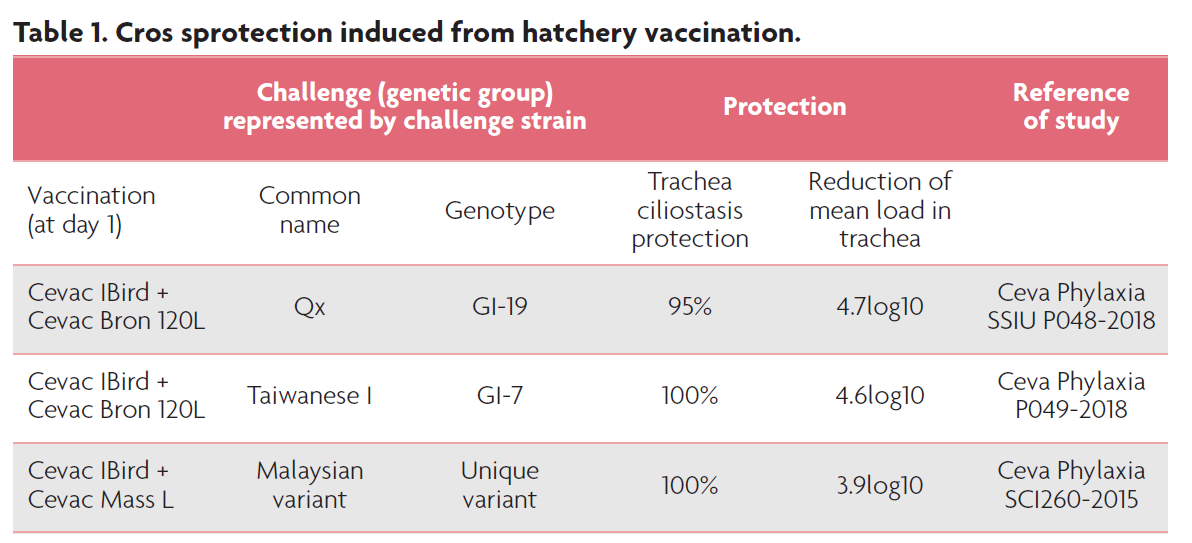
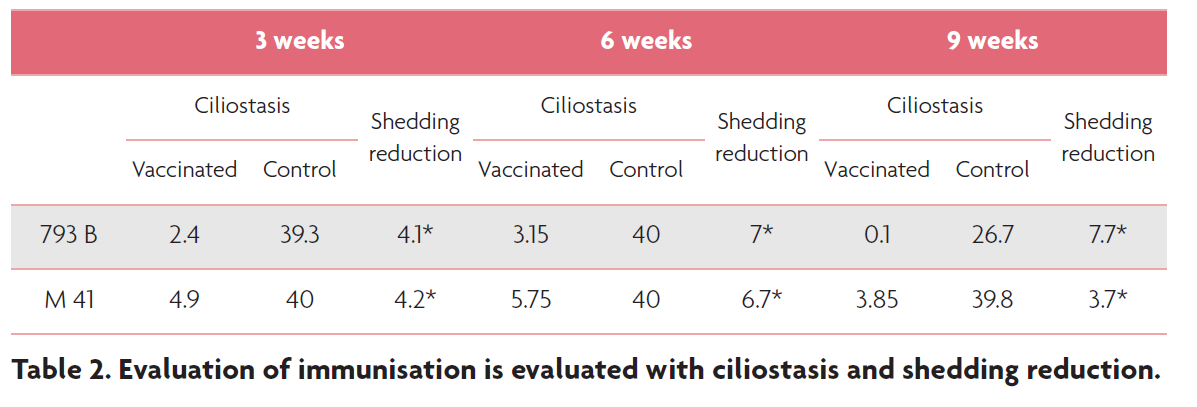
IMMUNIZATION AND IMPACT
Coronavirus is very sensitive to cleaning products (detergent, disinfectant) so the downtime period is efficient to destroy it at the farm level.
No vertical transmission (direct and indirect) is detected. But the contamination between farms with different support (equipment, people, wind) is the best way of infectious bronchitis dissemination and the unique prevention could be an optimal immunization of all poultry production in the area.
Bad or inefficient immunization can contribute to contamination and high excretion. The high contamination and shedding produce high dissemination. Professor De Wit modeled this approach with the ‘R’ coefficient to explain it. The vaccinated groups (R=0.69) and the unvaccinated groups (R=19.95) have a strong and direct impact on the probability percentage of the number of contact infections.
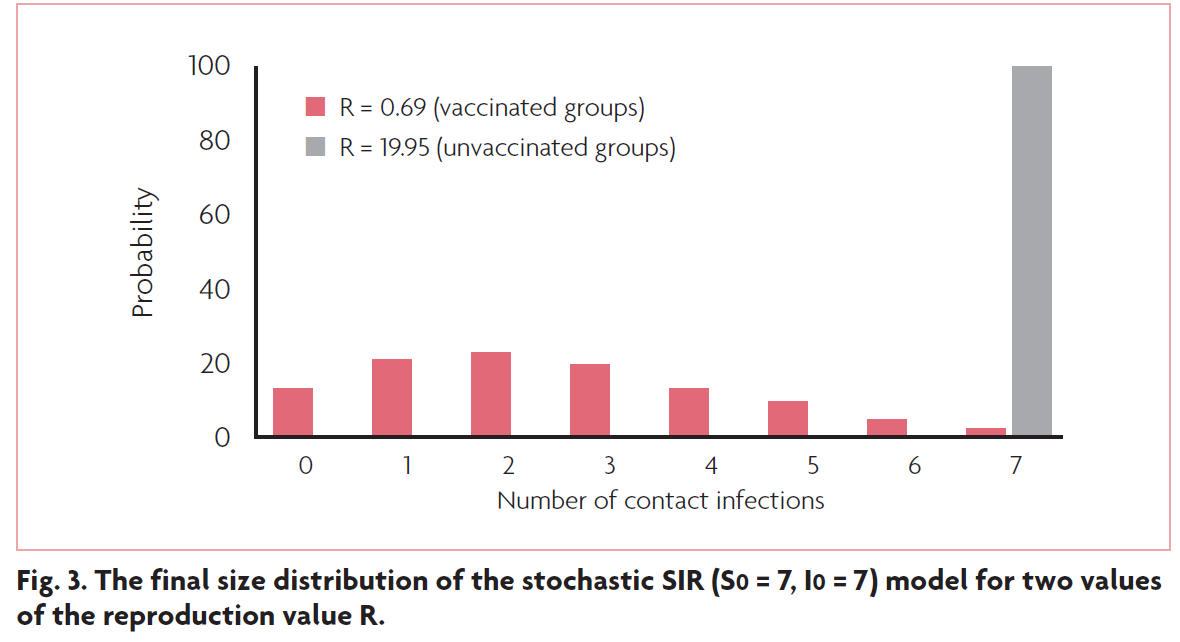
High contagiousness + high shedding = high dissemination.
Conclusion
With this knowledge about coronavirus and understanding of the parameters of immunization, the Veterinary Technical Support team can focus on the specific critical points directly affected by choice and actions.
On the farm, it is very difficult to manage biosecurity measures when the contagiousness of the virus and shedding are at their highest. Infectious bronchitis virus is quickly widespread.
The objectives are to evaluate coronavirus pressure around the broiler farm and in the country and to secure the vaccine application and vaccination program.



